New Orleans makes a strong impression. Its history, architecture, and culture are all unique and powerful. It is a city that was shaped by its many residents, and in turn, shapes those who live there. Neither nature, war, politics, fire, commercialism, nor the change of national allegiance has managed to overcome the spirit of the city. They all left their mark and it is a place forever changing, but it remains unique to a degree few other American cities can claim.
New Orleans was founded in 1718 by a French trading company, then ceded to the Spanish in 1763. The French regained it in 1803 and promptly sold it to the United States in the Louisiana Purchase. The Brittish tried to take it in the war of 1812 but were repulsed. It has been savaged by many storms including Katrina in 2005 which left much of the city flooded. Throughout its history, it has been a city of trade and immigrants with wave after wave of new cultures and traditions pouring in, a process that continues to this day.
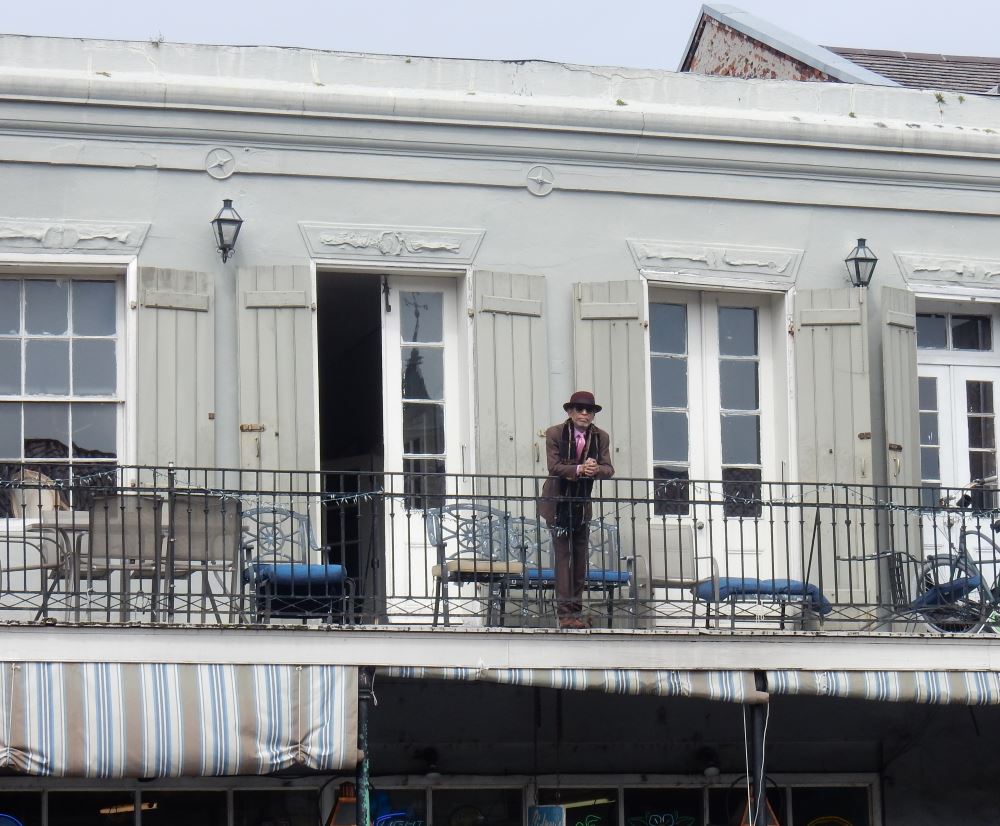
I’ve no idea who this gentleman is, but I found him watching over the french quarter and though he personified the spirit of the neighborhood.
Getting started
You could spend a lifetime exploring the city, but we spent only a single day here. Normally we take things slow, but due to the costs of coming into the city and our desire to partake of its culinary offerings, we packed our visit into a single day, starting early and ending late. To make things easy, we bought tickets for the Hop-On-Hop-Off tour bus service. These double decker buses run a circuit through key areas of the city. As the name implies, if you have a ticket you can board and depart at any of the 18 stops. Each bus has a tour guide who talks about the locations the bus passes through while you ride. Some of the stops also feature guided walking tours either included in the price or discounted with your ticket.
We arrived early in the French Quarter to ensure we could find parking. This is not a city you want to drive around in during the busy parts of the day. The streets are a maze of narrow one-way passages clogged with pedestrians and other vehicles. Navigating our big truck through the crowded streets was no easy enterprise. If you don’t want to take a tour bus around the city as we did, I recommend using the two streetcar lines in the city. One runs by the riverside, while the other is more uptown. If your ride up one and back on the other you will cover most of the key areas of the city with very little expense.
There are three main tourist districts in New Orleans. There is the French Quarter which is chock full of tourist attractions, retail shops, and historical landmarks. On the other side of town is the Garden District which is the residential counterpart to the French Quarter. It also has shops and the like but caters a bit more to the local residents of the city. Between them, you have the modern commercial district where you will find all the big hotels, casinos, and the like. While it was not a district on our tour map, I’d say the river side is its own entity featuring a mix of parks, river boat tours, and local industry along the banks of the Mississippi river.
The French Quarter
Our first stop was the french quarter. It really is a unique and magical place among American cities. While it caters to tourism, it has a very nice mix of crass commercialism, authentic local artisanship, and a rich history maintained in its architecture and traditions. We started out near Jackson Square, which is a walled garden and park adjacent to two historic hotels and a large catholic cathedral. Street musicians and buskers of all sorts were plying their trade on the modest crowd of tourists wandering about. We were there just after Mardi Gras so the vibe was fairly low key as the city digested the aftermath of the massive festivities.
We wandered our way into the lovely Saint Louis cathedral where folks were gathering for late morning services and then down the maze of twisting back streets. A collection of slumbering cats drew us into a rug shop where the owners were hand looming wool rugs. We stopped to ask them about their shop, their cats and the city at large and they, in turn, were curious about our travel adventures. After petting some very aged but happy cats, we wandered back out into the streets to check out other curious establishments including a vintage soda shop and a store selling European toys.
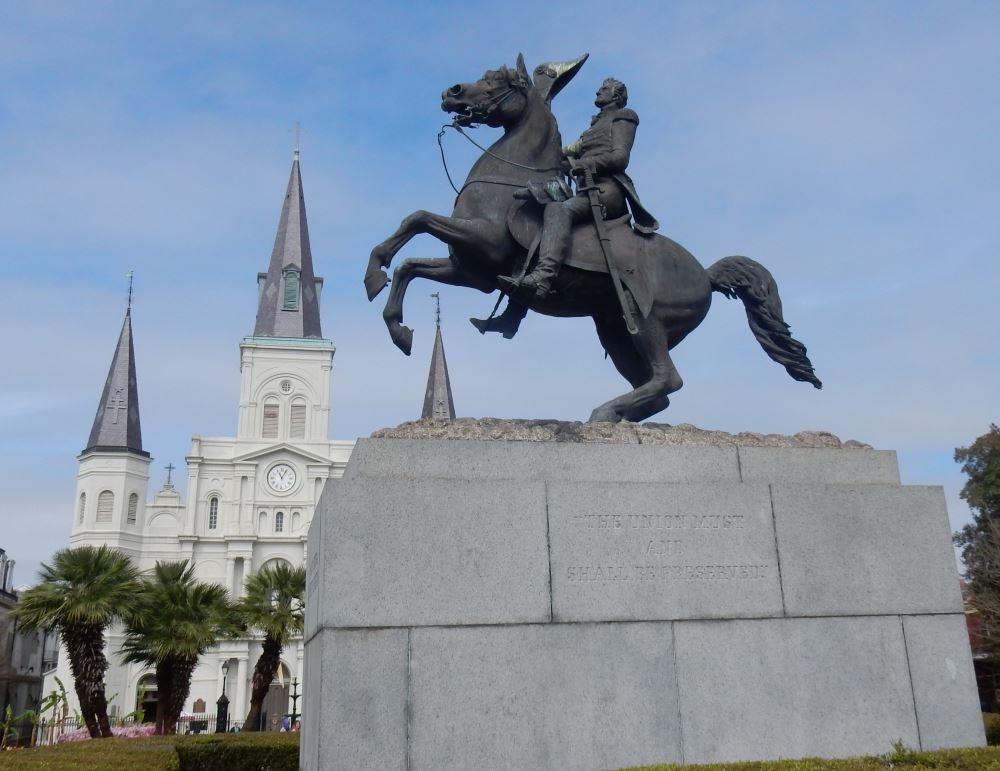
It’s Andrew Jackson in Jackson Square. He utterly crushed a British attack on the city in the war of 1812 and became a famous hero as a result.
To the Bus!
To check out the rest of the city we found the office for our tour bus, picked up our pre-paid tickets, and jumped on. The buses are double deckers so we headed for the top front seats to get the best view as we rolled around town. Each bus includes a tour guide who talks about the landmarks and history of the city. We got to ride with three different guides in our trip. The best was a retired gentleman who did it once a week for fun and had lived in the city since he was a child. Trail and I took advantage of the slow roll to play some Pokemon Go. If you like playing, city tour buses are perhaps the ultimate way to play the game.
The bus wound its way through the french quarter and into the Business District. This is the modern part of the city and is not markedly different than other major city centers. Office towers, hotels, and the Superdome dominate the skyline, but you can find historic theaters and other older institutions along the main drag. This district is also home to the official WW II museum of the United States. You might wonder, what does New Orleans have to do with WW II. It turns out, many of the landing craft used in D-Day were manufactured here. That gave rise to a D-Day museum which eventually was expanded to encompass the whole of the war. We didn’t have time to explore it on this day, our goal was the Garden District.
The Garden District
The garden district was named for the private gardens kept by the wealthy residents of the city who made their home here. Whereas the french quarter is the retail heart of the city, the Garden District is its residential heart. While there is plenty of tourism here, it is also where the locals tend to live, dine and shop for ordinary goods. We had three missions here: take a walking tour offered by the bus company, check out the graveyard, and grab something to eat.
First up was our walking tour. We met up with our somewhat wry guide and followed him through the garden district’s most affluent areas. While the highlight of the tour was supposed to be the homes of famous stars, I was more interested in the history and architecture of the neighborhood. Happily, our guide delivered on all accounts. He did a nice job introducing how the neighborhood was formed and dug into detail about the different styles of homes and how they came to be built. We started out with narrow row houses, packed in tight, and moved to the large mansions that occupied whole blocks. Despite the multi-million dollar homes here, the streets are some of the worst I’ve seen. The soft soil and huge oak trees turn the narrow lanes and sidewalks into undulating waves of assault and cracked concrete.
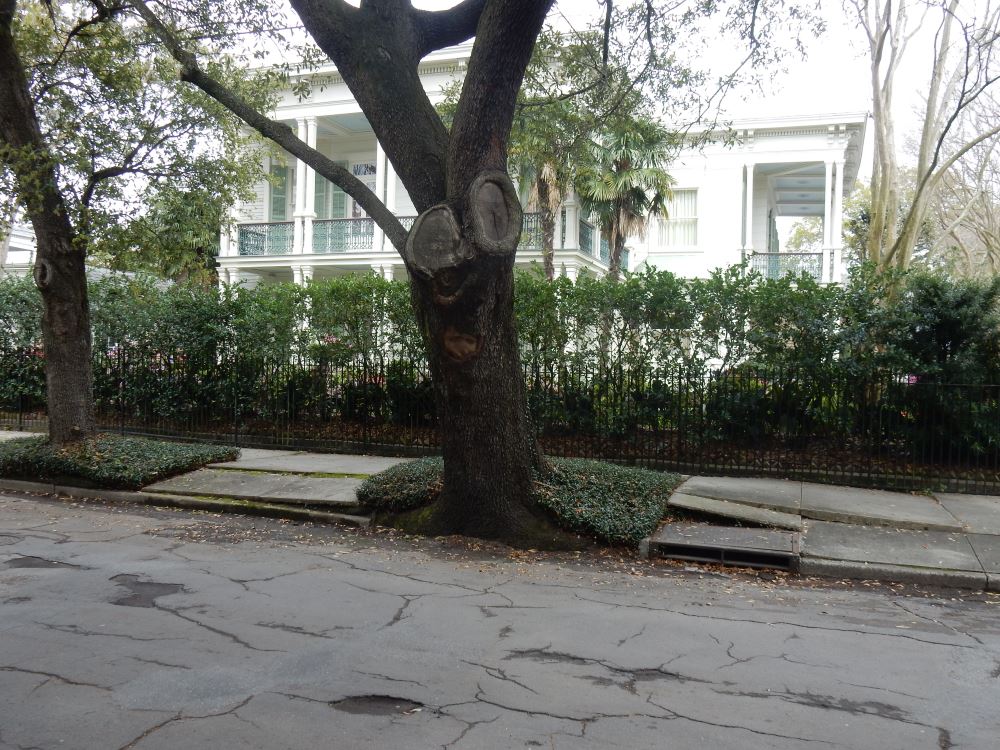
This mansion is valued at near $8 million. The most expensive in the city. And here is the road running in front of it. Trent Reznor once lived here.
After the walking tour, we headed to the above ground cemetery to explore the mausoleums. Despite occupying only a single city block, this necropolis houses the remains of tens of thousands of city residents extending back hundreds of years. Bodies are interred above ground inside the stone monuments where the warm and humid air allows bacteria to dissolve even the bones. After a time, the remains are swept into a pit under the tomb and another is laid to rest above. Wandering among the stone memorials is a surreal experience. Some are crumbling and covered with moss, while others look as if they were very recently carved. Wandering lanes and byways criss-cross between them creating a maze of passages and plazas. It truly is a miniature city of the dead.
On our way to find lunch, we stopped off at a photographic gallery that caught our eye. It featured large black and white images of New Orleans in the aftermath of Hurricane Catrina. Yachts sitting in the middle of debris strewn streets, toppled tombs, and people seeking refuge on rooftops spoke to a city devastated by nature. Yet here we were, with hardly a trace remaining of the devastation so far as our un-informed eyes could see. I was moved by the resiliency and industry of Americans in the face of great challenge and the ability of the city to preserve its character no matter what comes.
Time to eat
Going to New Orleans without partaking of its cuisine would be a sin I could not abide. We hit up a local spot recommended by one of the tour guides. Unfortunately, we failed to get a recommendation on what to order. I went for the shrimp and artichoke pasta while Trail ordered chicken parmesan. While both were decent, neither was outstanding. On the other hand, the bean soup that Trail had ordered as an appetizer was the best of its kind I’d ever had. Judging by our neighbor’s orders, we should have gone for po’boy sandwiches and soup, the sandwiches looked awesome! Lesson learned, always ask what to order if you get a restaurant recommendation or spend some time eyeballing what comes out of the kitchen.
But we were not done yet. While we were in the French Quarter we’d drooled a bit over the beignets being served at one of the cafes. The lines were around the block so we resolved to come back later. Now was the time. We caught the last tour bus of the day back to the french quarter, completing our loop of the entire route. By the time we arrived the crowds had thinned and there was no wait at the cafe. We each ordered a plate of beignets drenched in powdered sugar along with a nice hot chocolate to dip them in. The food and the setting were a perfect pairing.
But we were not quite done with New Orleans. A little daylight remained so we made our way to the riverside to stroll in the park and watch the sun set over the Mississippi river. We found a lovely park along the river, perfect for the evening stroll. We watched paddle boats and container ships navigate the river as we walked hand in hand. Nearing a docked riverboat we heard the sounds of a live band playing 1920’s period jazz. Apparently, they were having a themed costume ball and we found ourselves wishing we could jump aboard. We contended ourselves with a dance on the docks and the thought of “next time.” As the sun dipped below the horizon and the city readied itself for the revels of the night, we made our way back to our chariot and bid the big easy adieu.
- A city of the dead.
- St Louis Cathedral
- Garden District House – one of many luxury homes in the area
- Lafayette Cemetery No 1 – So great people are dying to get in!
- So many tombs!
- Us at New Orleans
- Jackson Square
- French Quarter
- Lafayette Cemetery No 1 tombs
- Trail (Anne) poses with a street named for her name saint.
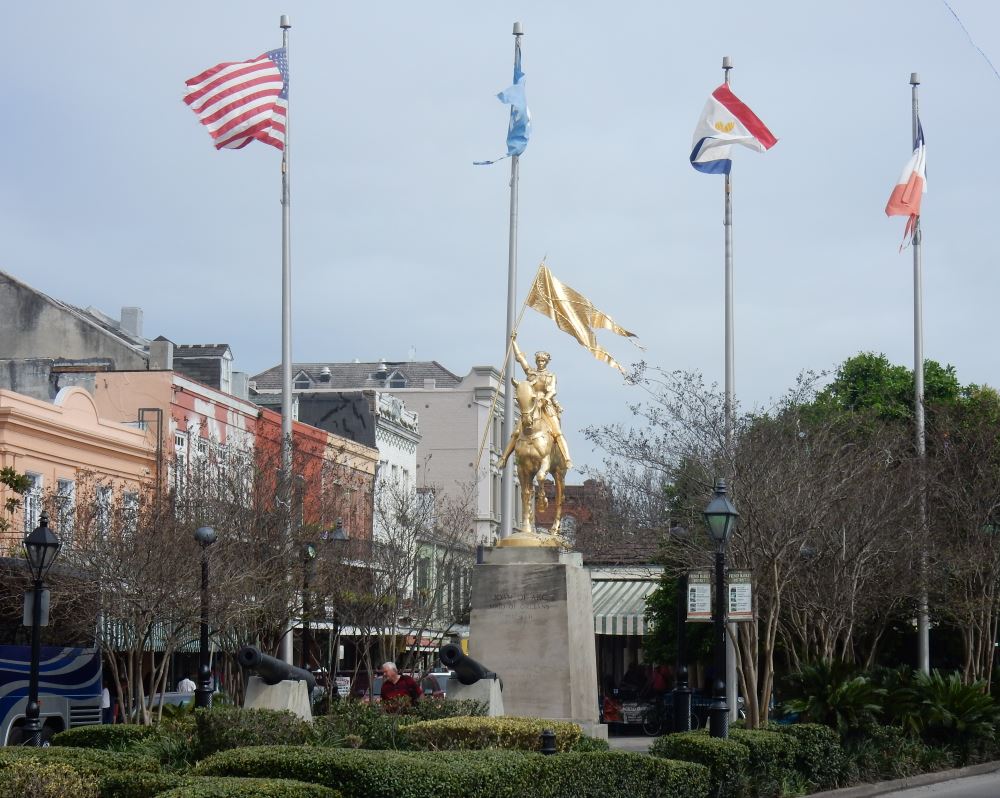
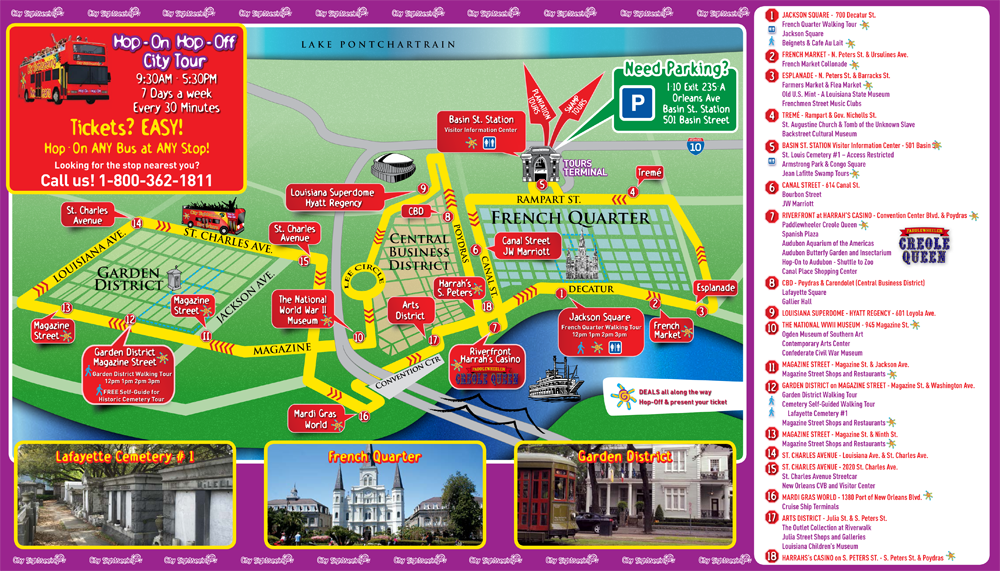
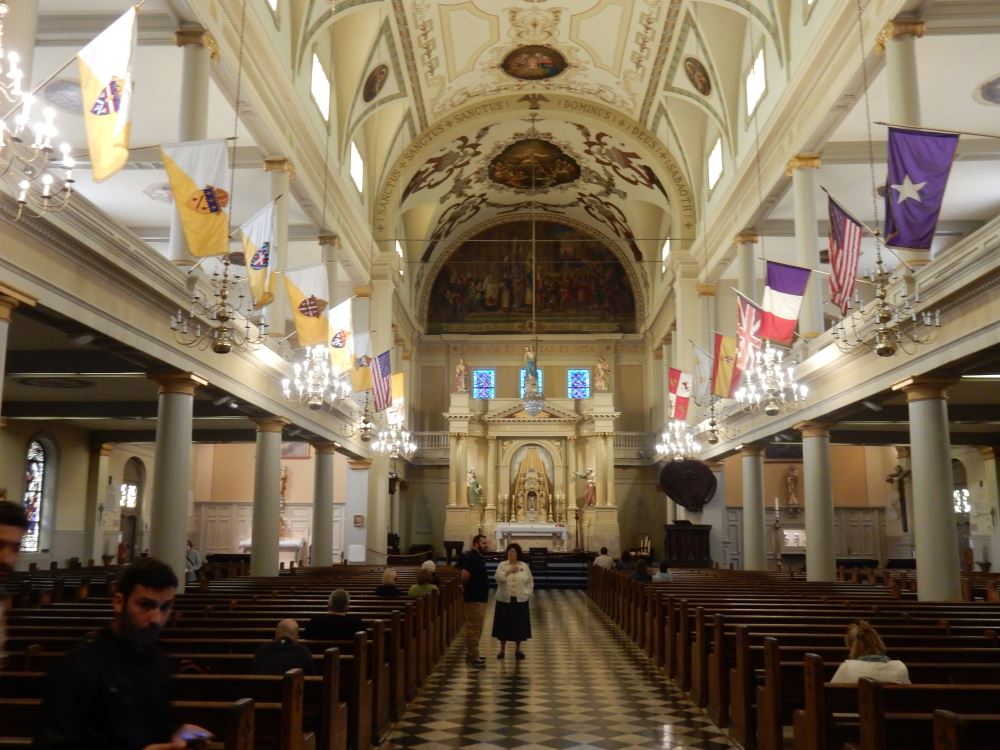
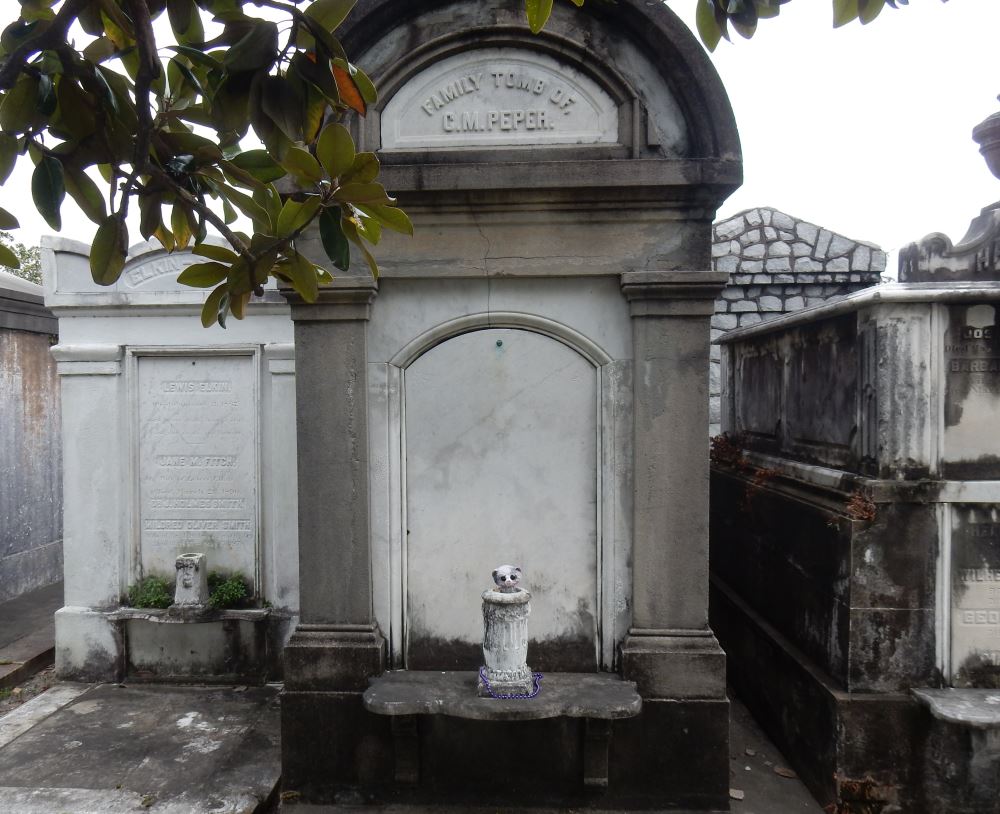
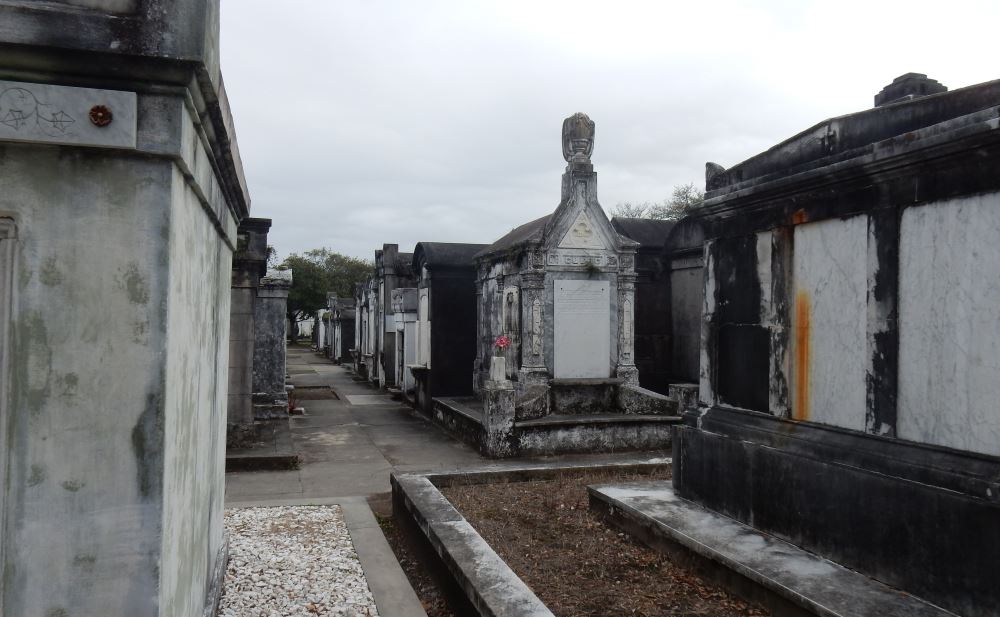
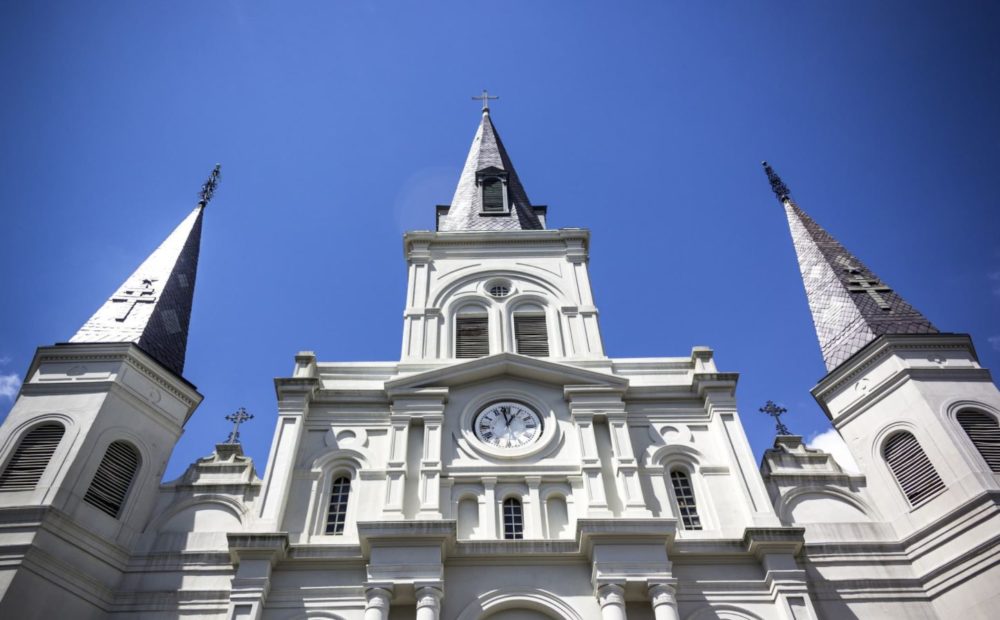
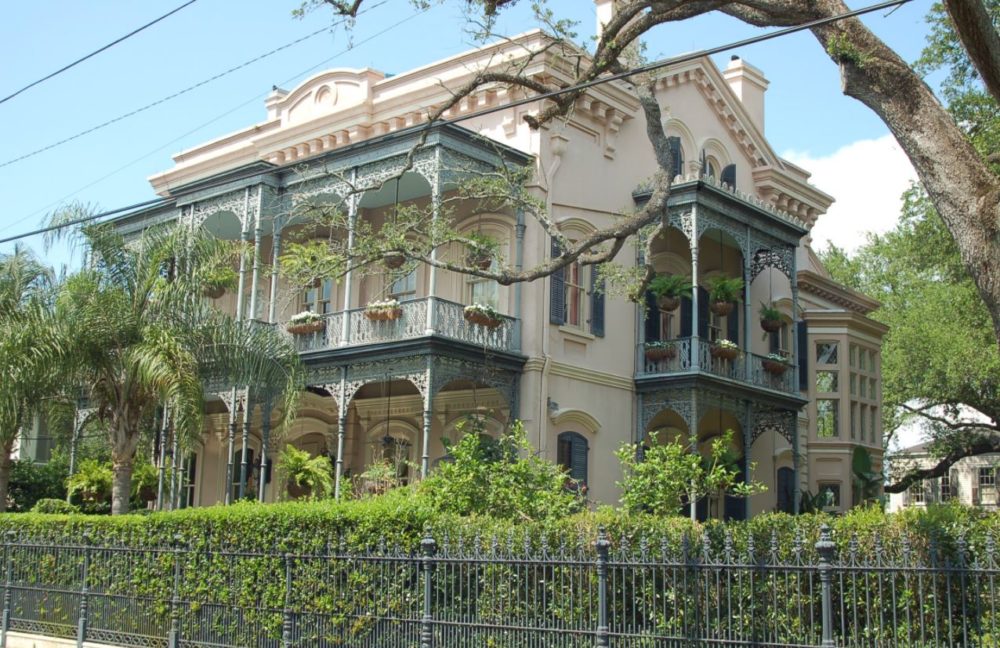
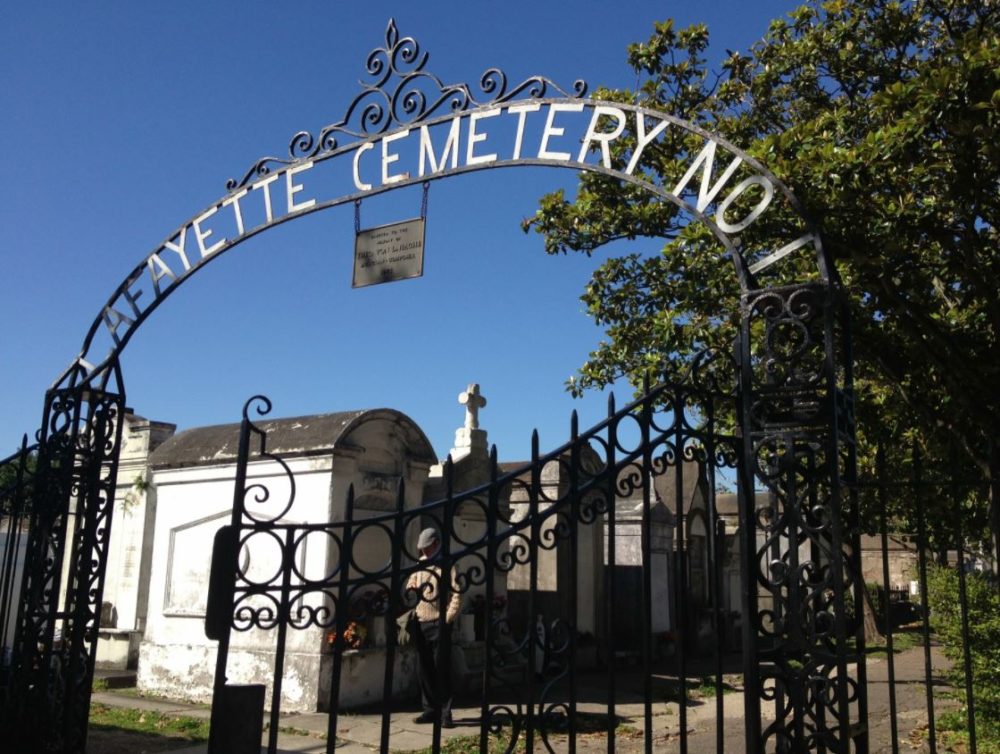
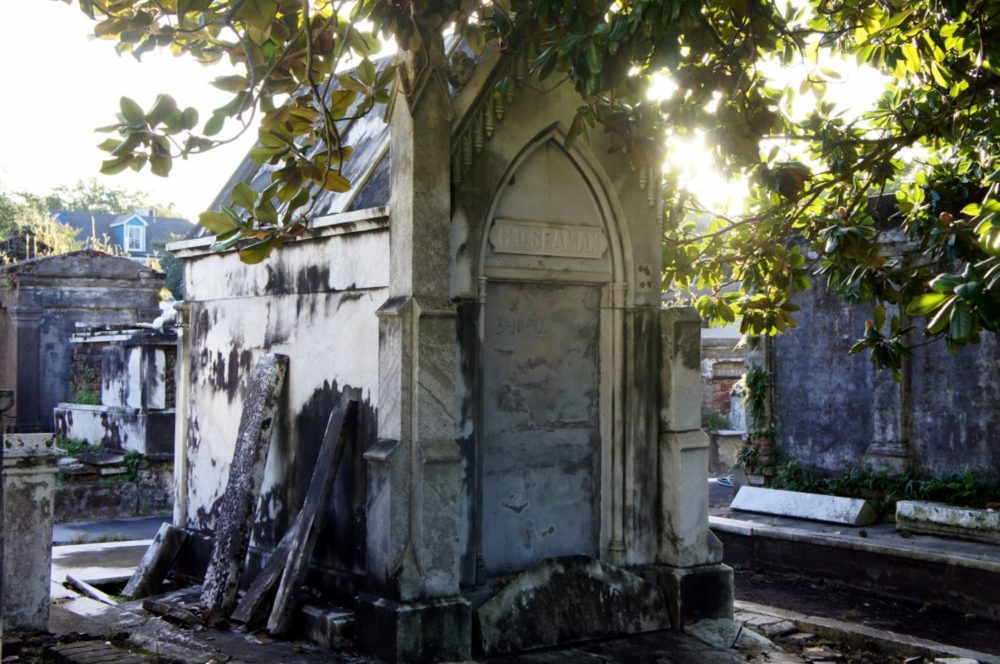
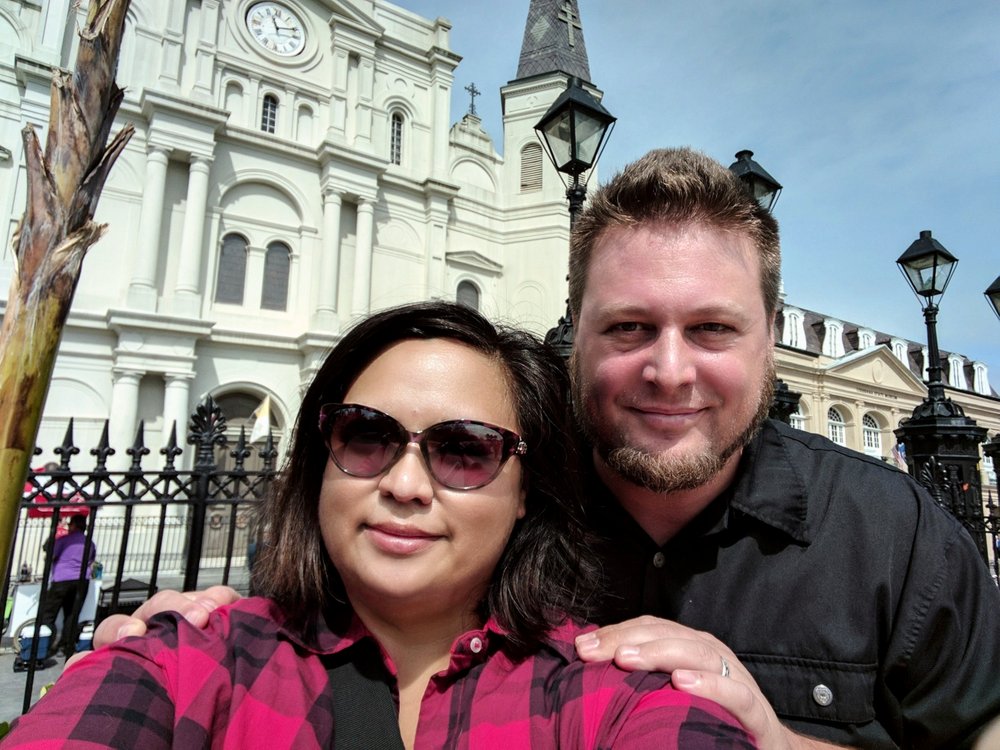
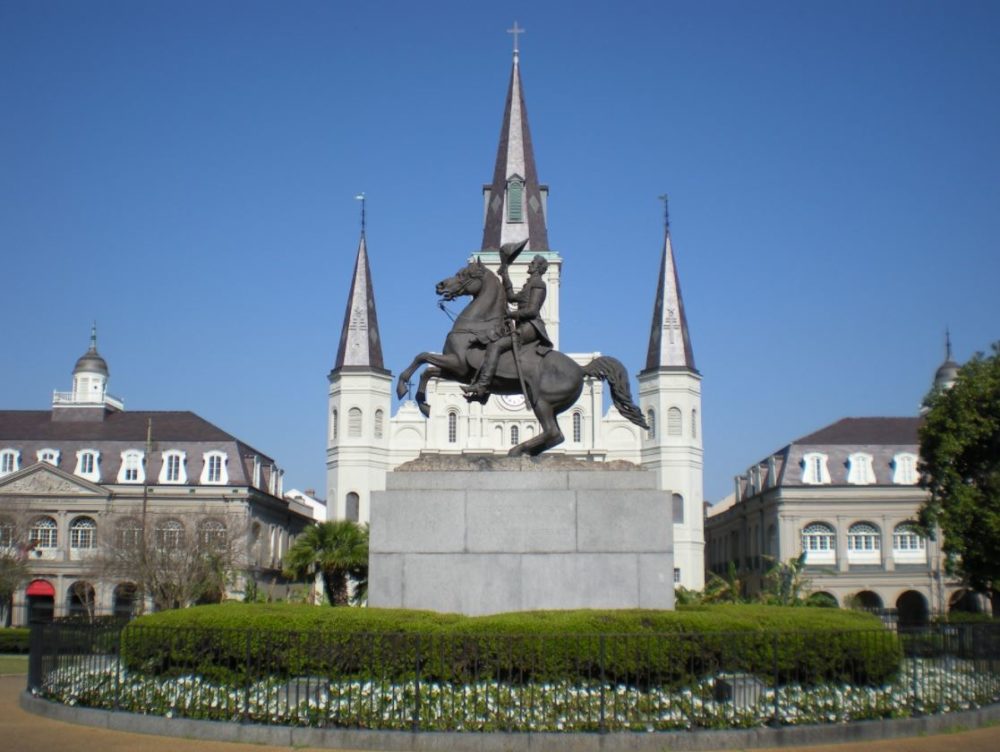
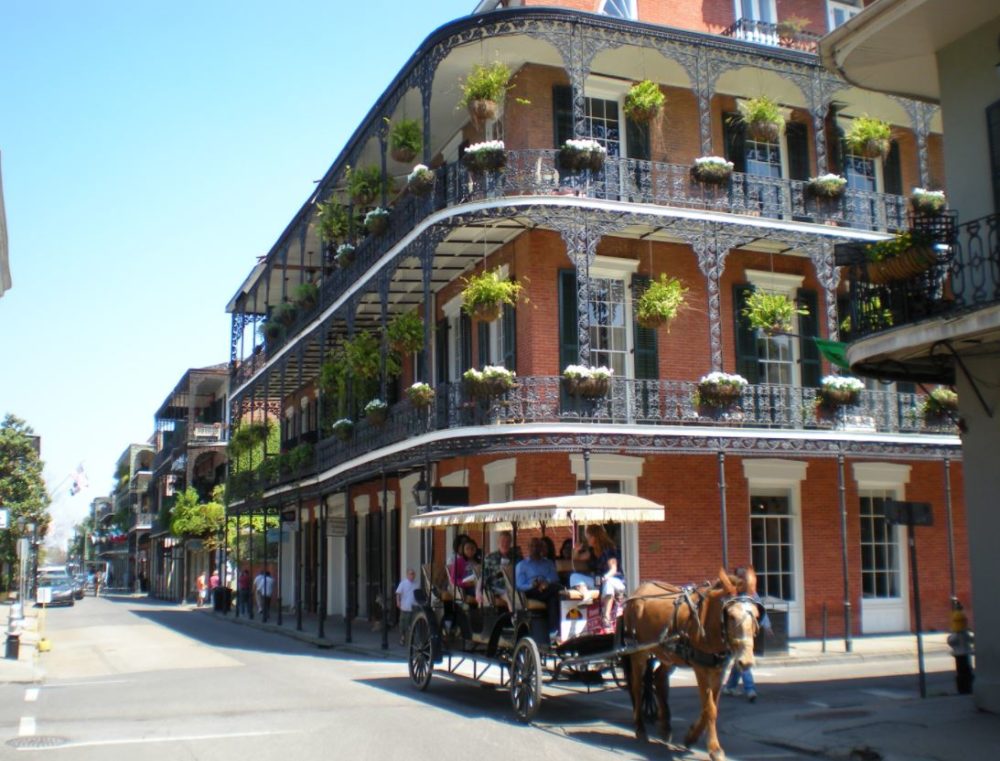
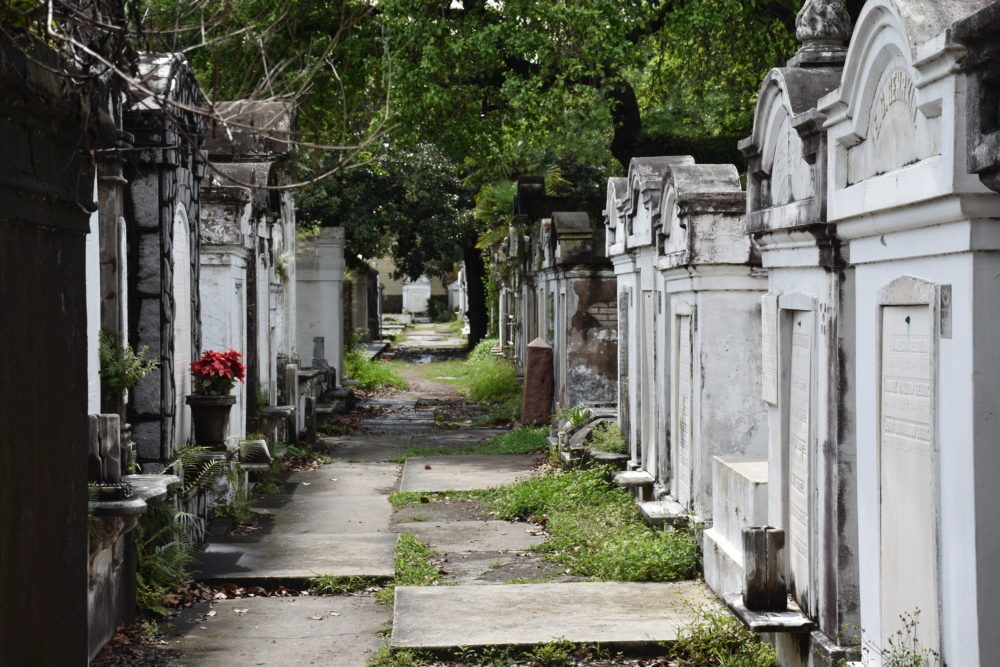
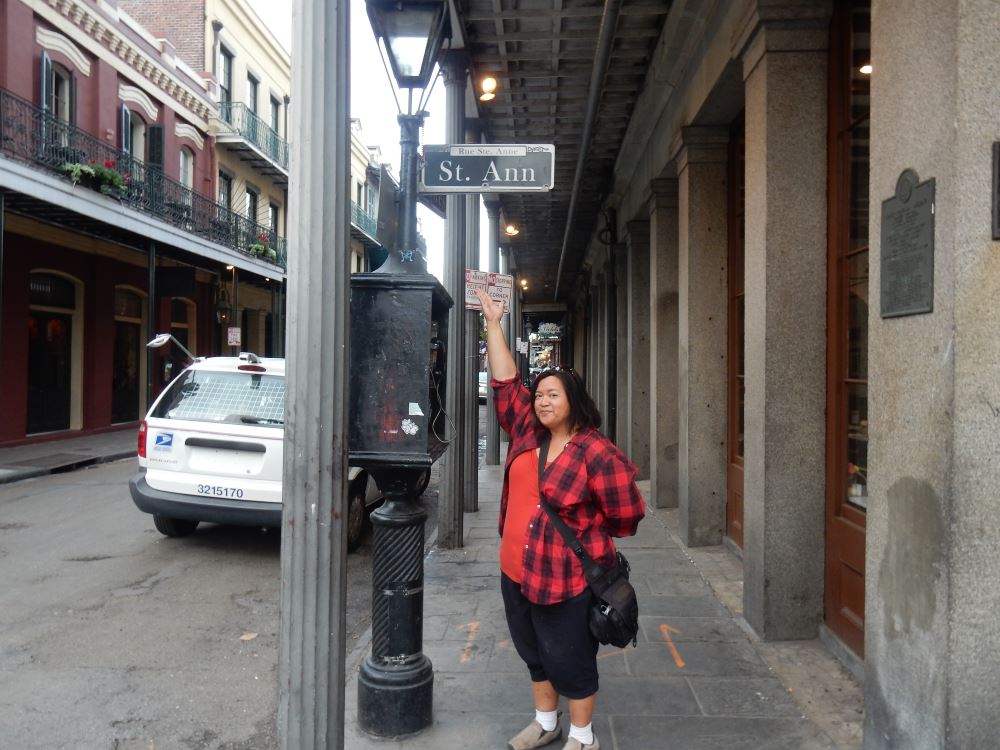
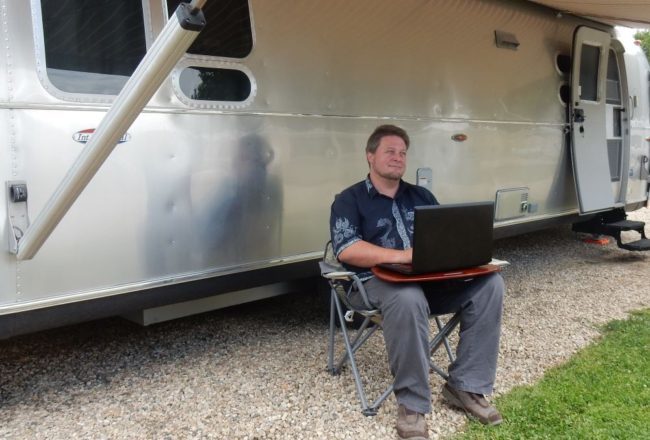
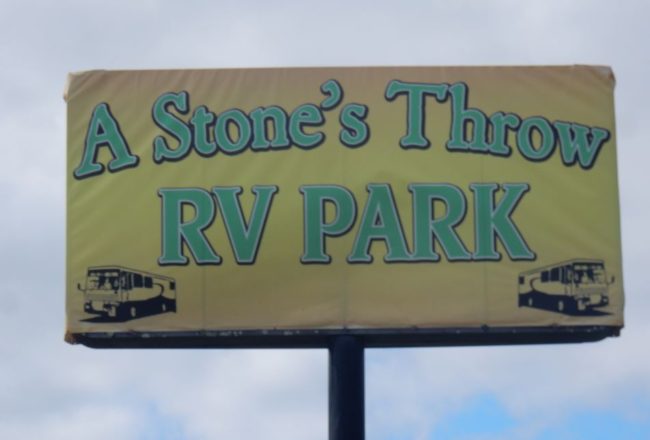
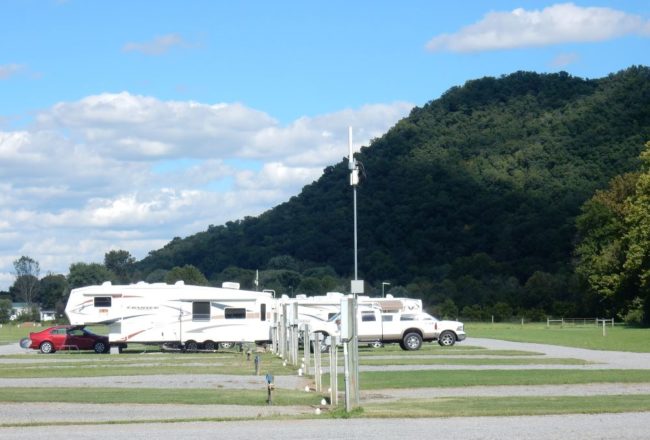


2 Comments
Tremendous article, Sig!
I’ve always loved New Orleans for the food. As you found out, the beignets and chicory coffee at Cafe du Monde on Jackson Square are a must. For lunch, a Po’boy or muffuletta sandwich is a must. Cochon Butcher, a couple of blocks east of the WWII museum, serves both. For dinner, the best meal I’ve ever eaten is the Barbecue Shrimp at Pascal Manale’s in the Garden District: gigantic prawns broiled in butter and covered with black pepper, served in a bowl with fresh, hot french bread. Manale’s was one of the ten best restaurants in the world in the 1920s and 1930s. In my book, it still is.
Thanks, Craig. I wish I’d remembered your recommendation for Pascal Manale’s. The description is making my mouth water. I ended up with a shrimp and artichoke pasta dish and for some reason, that combo just didn’t work for me. The seafood flavor on the artichoke soured my palate after a while and it was a huge plate of pasta. The shrimp were fine but I was hankering for fantastic at the time. There is always next time. And I do hope to get back to New Orleans again.